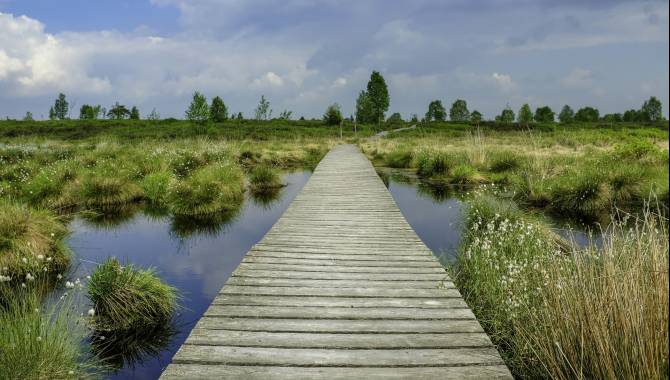High Fens conservation area
1/6



Photo: hohes venn brackvenn 02 c christian charlier ostbelgien.eu , CC BY ,East Belgium Tourist Agency NPO

Photo: hohes venn brackvenn 03 c christian charlier ostbelgien.eu , CC BY ,East Belgium Tourist Agency NPO

Photo: hohes venn brackvenn 01 c christian charlier ostbelgien.eu , CC BY ,East Belgium Tourist Agency NPO

Photo: hohes venn wandern brackvenn 09 c best of wandern thomas bichler , CC BY ,East Belgium Tourist Agency NPO

Photo: 8 hohes venn wandern baraque michel 17 image c ostbelgien.eu dominik ketz , CC BY ,East Belgium Tourist Agency NPO

Photo: hohes venn frost 17 c pa massotte , CC BY ,East Belgium Tourist Agency NPO






Description
The High Fens are a biotope of a kind almost unique in Europe. The peat layer is up to eight metres thick. Over vast areas, the High Fens are like an enormous sponge. Access is strictly controlled. Where it is permitted, boardwalks and signposted routes guide the visitor safely through a natural landscape, which has a charm of its own at any time of the year. In the spring, our gaze wanders over meadows of wild daffodils and tussocky cotton grass, in summer over ponds in which water birds raise their brood, in the autumn over russet heathland, and in winter over a desert of ice and snow, which has a positively Siberian feel to it. Because of the harsh climate with an average temperature of only 6.1°C, the High Fens are home to numerous very rare plant species indigenous to Northern Europe, the mountain regions and the Atlantic region. Moor grasses rub their tussocky, mushroom-shaped heads together. Common rushes wave in the wind. Bilberries, bog rosemary and bog asphodel form an herbaceous cushion.
Yet the fen landscape as we know it today came about mainly under human influence. Pasture farming, the clearance of woodland and peat cutting have all created open areas. Right on into the Middle Ages, 90% of the High Fens was covered in deciduous forest. From about 1840 on, many heathland areas were planted with spruces.
So that the remaining moorland can be protected together with its fauna and flora, an area of 4500 hectares (11,120 acres) has been designated as a conservation area since 1957. The most sensitive zones are off limits, whilst access to others is only permitted accompanied by a certified hiking guide.
Carte
High Fens conservation area